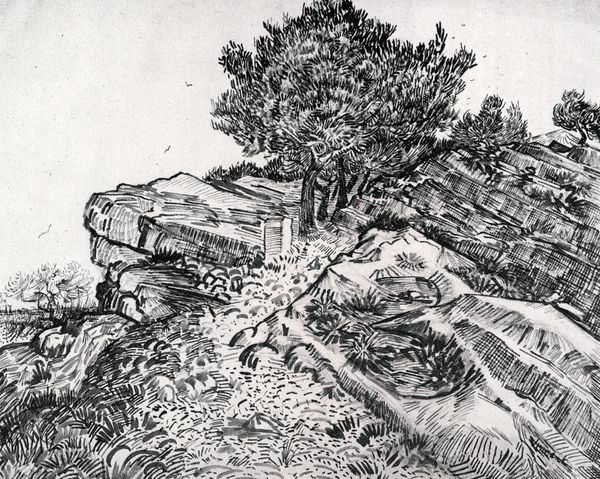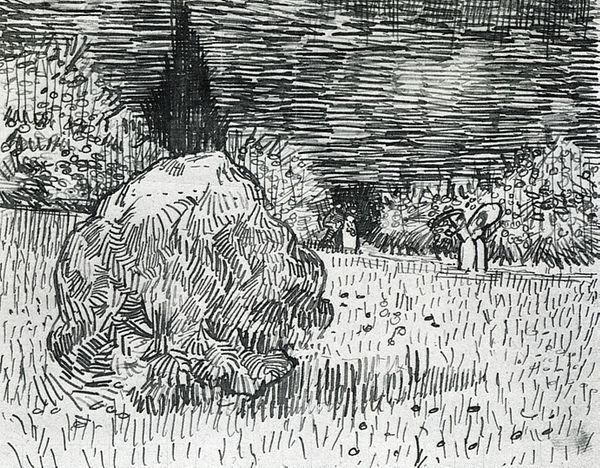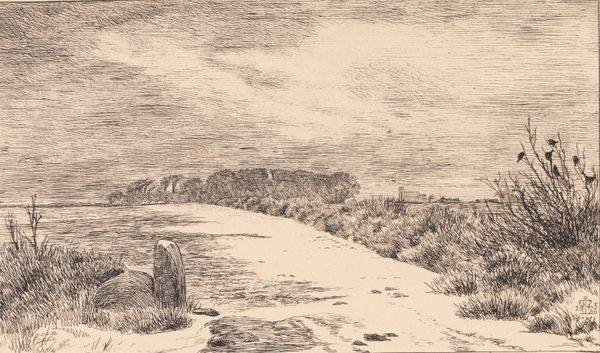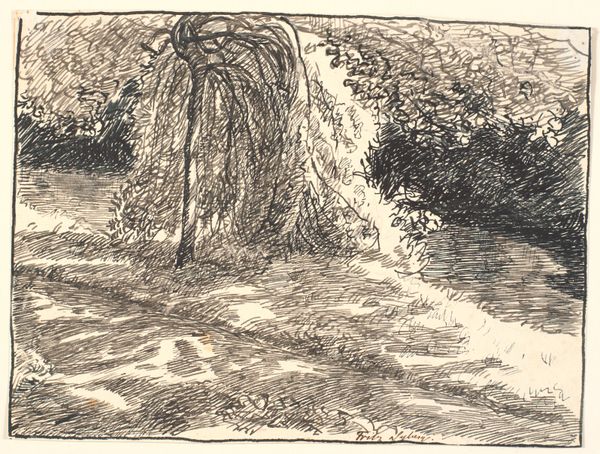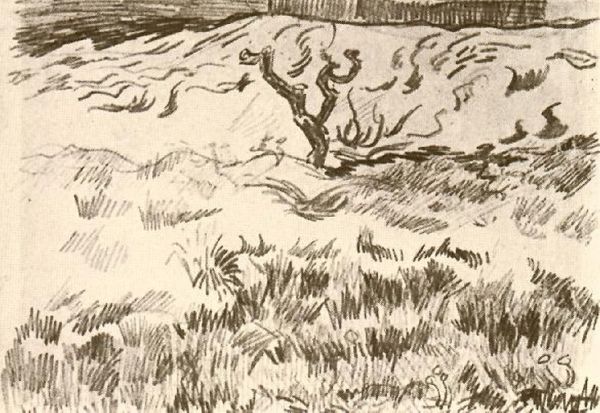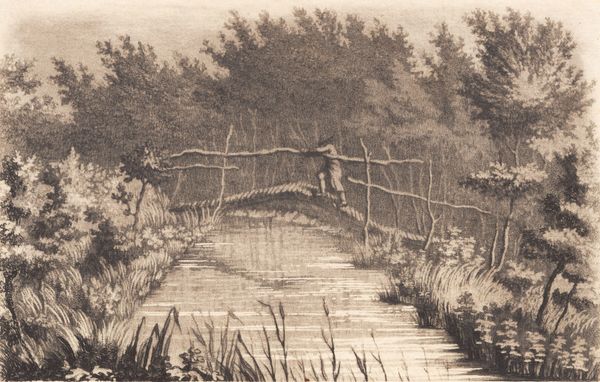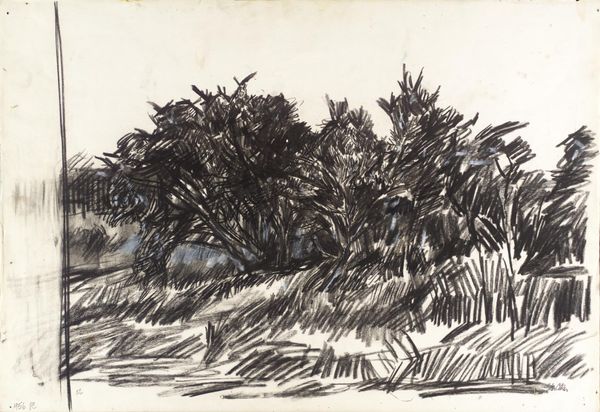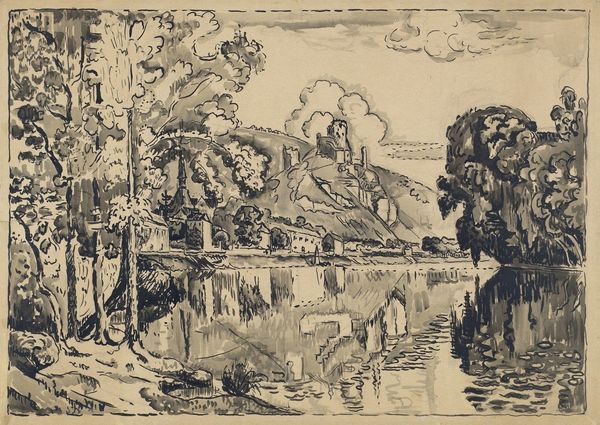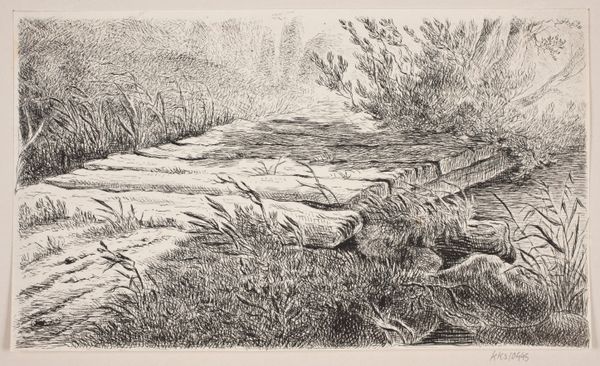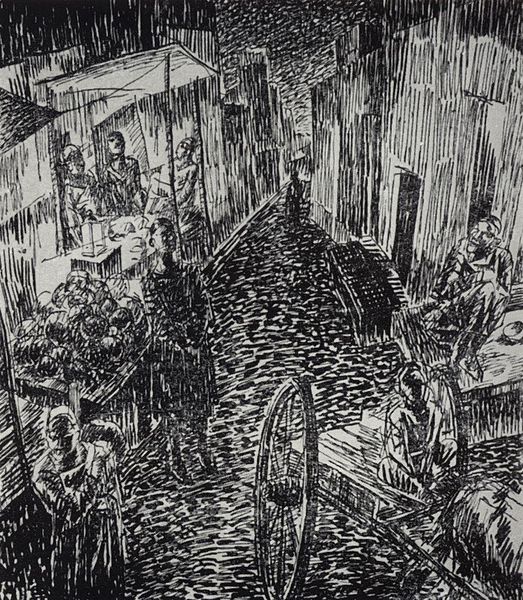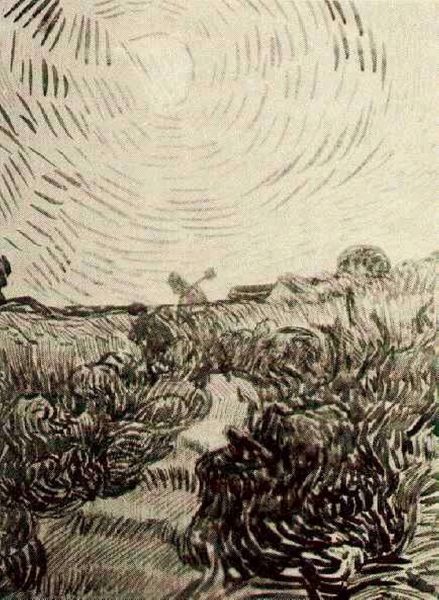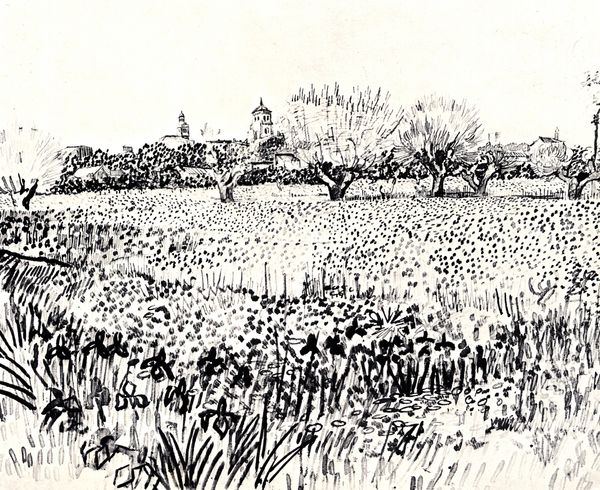
drawing, plein-air, impasto, ink
#
drawing
#
plein-air
#
landscape
#
impasto
#
ink
#
line
#
post-impressionism
#
realism
#
monochrome
Dimensions: 49 x 61.5 cm
Copyright: Public domain
Editor: Here we have Van Gogh's "The Park at Arles" from 1889, a pen and ink drawing. The texture created by the varied lines is really striking, almost chaotic. How do you read the composition of this piece? Curator: I would immediately note the pronounced linearity, visible across the entire composition. Consider how the insistent vertical strokes denoting the grassy thicket, establish a rhythmic plane in the foreground. These, counterpoised against the dense, almost scribbled texture of the trees, create a compelling visual tension. Do you see how that tension guides the viewer's eye? Editor: I think so! The density in the upper part sort of pushes the eye back down to the more defined path and foreground. Curator: Precisely. And that use of line is paramount here. Observe how Van Gogh forgoes traditional shading and modeling. Instead, he uses the sheer accumulation and directional shift of these lines to suggest depth and volume. In essence, he's constructing form through a kind of calligraphic intensity. Editor: That's interesting, it's almost like the lines themselves are the subject rather than what they depict. Curator: One might indeed argue that the drawing functions less as a representational exercise, and more as a study in the expressive capacity of line. It lays bare the foundational elements of visual construction. How might that inform your understanding of other works by Van Gogh? Editor: This makes me see how his paintings use color in a similarly expressive way. Thanks, that really clarified the power of line in this drawing. Curator: My pleasure. This exercise underscores how seemingly simple elements, like line, can carry profound structural and expressive weight.
Comments
No comments
Be the first to comment and join the conversation on the ultimate creative platform.
